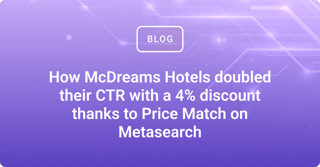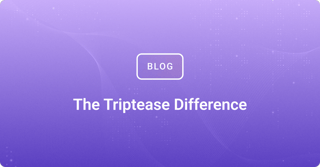Hoteliers running loyalty programs often use member rates as an incentive to attract more guests. However, with Online Travel Agents (OTAs) continuously undercutting hotels across all regions and offering highly popular loyalty schemes of their own, it’s becoming increasingly difficult to compete cost-effectively. Large, blanket member discounts of 10% (or more) have become common.
In this blog, we’ll explore how hoteliers can strike the right balance between building guest loyalty and staying competitive in today’s price-sensitive market.
"Member rates feel like a marketing gimmick"
A recent report from PwC’s 2024 Holiday Outlook suggests that while 63% of consumers plan to spend less this holiday season, many still view loyalty programs as essential for maximizing value through rewards. Research from CBRE supports this view, showing strong growth in loyalty scheme membership.
On the other hand, findings from McKinsey’s 2024 survey on travel loyalty highlighted a sharp drop in guests’ willingness to recommend hotel loyalty programs to friends or colleagues. There could be many reasons for this, including growing skepticism toward the true value of member rates. Some travelers feel that OTAs still offer lower prices. As one user shared in an open forum, “Why bother with loyalty programs when I can almost always find a cheaper rate on platforms like Expedia or Hotels.com?” Other users labeled member programs as a “marketing gimmick,” leaving them feeling like they’re “paying more by sticking to loyalty programs”.
Hoteliers still believe in the value of loyalty programmes
Regardless of this mixed picture, and potential guest skepticism as to the value of members-only prices, loyalty programs still offer significant benefits to hoteliers.
But it’s not all about room rates. They also find value in the first-party data and long-term relationships loyalty schemes help build.
At the New Orleans Direct Booking Summit 2022, Alan Gonzalez of Warwick Hotels emphasized how these programs help "get the basics right" by making guests feel valued through personalized experiences. The rich data collected—such as preferences and birthdays—enables more targeted marketing campaigns, boosting repeat bookings in future.
Alan also emphasized that a successful program requires a strong data strategy, stressing the importance of clear naming conventions as an example of how to improve. Implementing such a strategy isn’t easy but despite the related challenges, many hoteliers agree that the loyalty and insights gained are worth the effort.
So it’s win/win, surely? Attract more people with low prices and leverage the resulting data for more future revenue.
In truth, capturing direct bookings with member rates is only a win if your discounting strategy can be managed in a way that doesn’t leave money on the table. And for all too many hotels - whether due to resource, data or technology limitations - blanket member discounts that punish the bottom line, often running at 10% or more across the board, are today’s norm.
So assuming loyalty schemes are here to stay, however the public may feel about them, hoteliers face a crucial choice: sacrifice profitability by sticking with inflated, undifferentiated member rates, or explore alternative pricing options and focus loyalty efforts on more efficient incentives.
-1.jpg?width=2121&height=1414&name=DBS%20NOLA_WEB%20READY_569%20(1)-1.jpg)
Stay competitive with smaller discounts
Triptease global data reveals that hotels don’t actually need to offer deep discounts to remain competitive against OTAs. In fact, the data suggests that most guests are looking for a deal that’s just a little bit cheaper than what OTAs offer—not a massive price drop.
The left side of the graph below shows that as OTAs like Expedia undercut your rates by increasing amounts (e.g., 5% or 10% cheaper) on metasearch platforms, your website's click-through rate (CTR) steadily decreases. In contrast, on the right side, when hotels price themselves just slightly cheaper than OTAs the CTR remains strong. In fact, discounts of less than 5% are usually sufficient to maximize performance. The same trend applies when it comes to on-site pricing, illustrating that hotels don’t need to offer deep discounts to stay competitive—being just a little cheaper can have a big impact on winning direct bookings.
%20(1)%20(1)%20(1).webp?width=1137&height=601&name=Graph%20-%20Precision%20discounting%20graph%20(1)%20(1)%20(1)%20(1).webp)
The right strategy for you and your guests
The data shows it’s time to move away from relying on excessive member rates as the main lever for your loyalty program. Instead, adopt a more strategic approach that allows you to offer precise, targeted discounts to price-sensitive customers without cutting into your margins, while still enhancing your loyalty program with other valuable benefits—such as loyalty points, free Wi-Fi, welcome drinks, or partnership discounts.
On-Site Price Match can compliment your hotel marketing strategy
That’s where Triptease On-Site Price Match comes in. A simple, plug-and-play solution, it drives more direct bookings by automatically matching OTA rates in real-time on your website, so that guests always see the best price for the inventory that matters most.
What sets On-Site Price Match apart is its ability to deliver small discounts that lead to significant wins. Instead of relying on large blanket discounts, hotels can dynamically apply ‘just enough’ discounts that secure direct bookings at the minimum cost.
This method keeps hotels competitive on price without the need for a complete overhaul of loyalty strategies.
Ultimately, the choice between member rates and On-Site Price Match isn’t an either-or decision. Hotels can deploy On-Site Price Match to capture price-sensitive bookings while using member programs to gather first-party data and offer personalized perks that increase guest loyalty and repeat bookings. Together, these tools can create a more balanced and effective marketing strategy that drives more guests to book direct, without sacrificing margins.
Get a free parity health check now
Is On-Site Price Match right for your hotel? Get a free parity health check today to see how small discounts could lead to big wins for your property.
Megan is the Product Marketing Executive for Targeted Messages.








